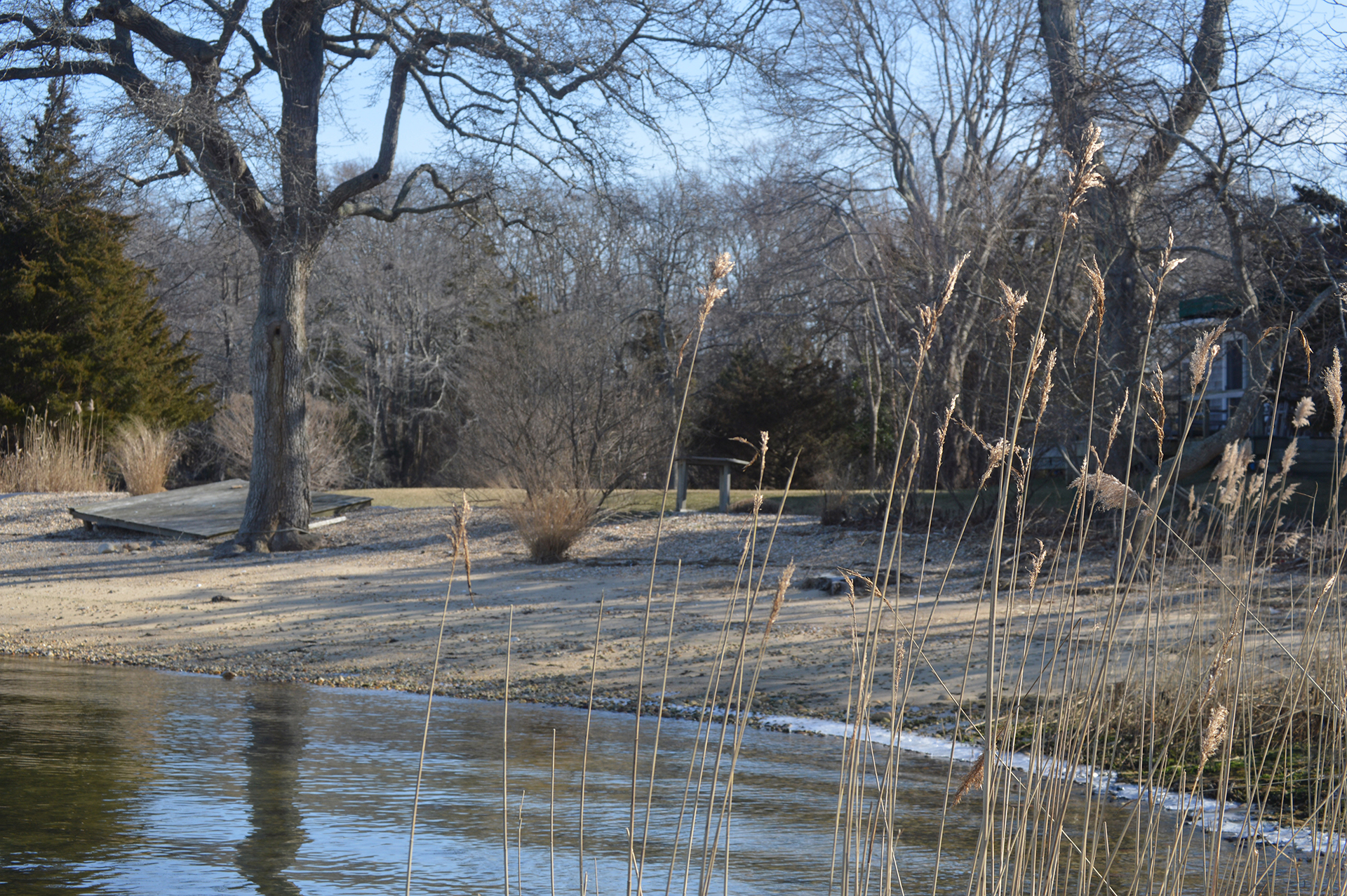EH ZBA Considers Fragile Waterfront Property

A plan to tear down and replace a house just yards from Three Mile Harbor with a larger structure drew the opposition of the East Hampton Town Planning Department, and criticism from East Hampton Town Zoning Board of Appeals members on January 22 during a public hearing that lasted almost three hours.
The one-acre property at 42 Oyster Shores Road in the Northwest Woods area not only has the harbor immediately to its south, but also a large, apparently manmade pond to the east. The property’s size is misleading, to some extent. Much of it consists of either wetlands or surface waters, features protected by the town code.
The owners, Rosalind and Robert Woolcott — represented by East End Planning’s Rick Whalen — said the current structure’s floor plan, under 2000 sqaure feet, is not sufficient to house their three children. The couple owns By Appointment Hamptons, a concierge and estate management company.
“It has been a nightmare, and my husband and I are up to here with the process,” Rosalind Woolcott told the board, referring to her interactions with the town. “The nightmare is misinformation, lack of information, a lack of meetings, and a lack of time.”
The Woolcotts want to build a slightly over 3000-square-foot house. But the property is so constrained by wetlands and scenic easements that it is difficult to find a location for the new structure that would conform with the code.
“The application is poorly designed for the constraints of the property,” Brian Frank, the town’s chief environmental analyst, told the board. He recommended outright denial of the application, which asks for substantial setback variances from the wetlands, and special permits from the town.
The Woolcotts purchased the property in late 2016 for about $1.775 million, according to online reports.
Roy Dalene said that there appeared to have been “some blatant violations, alterations of the scenic easement,” since the Woolcotts had purchased the property. “We should ask the applicants to address this.”
Both he and Frank referred to aerial photographs from the past couple of years which seem to show the creation of an artificial beach area on the shore of Three Mile Harbor. Frank described it as “faux beach.”
Frank addressed the question of the Woolcotts needs for their family, versus the real constraints on the property, opining that they were fully aware of what they were buying. “If you bought a lot that didn’t suit your family’s needs, that is not the responsibility of the town.” Dalene also pointed out that the Woolcotts apparently introduced irrigation tubing in the easement areas.
Frank echoed the board members’ sentiments that the encroachment into the easement areas should have been dealt with prior to application. “This should have never happened and this should have been fixed two years ago,” he said. Board chairman John Whelan added that if the application is rejected, a follow-up letter would be sent to the town’s code enforcement division “so it doesn’t slip off the radar.”
Rosalind Woolcott explained some of the violations of the easement areas. She said a path leading to the water “had thistles and poison ivy and our kids were running through it to get to the beach. We cleared it so you could get through there, and we put down two wooded pathways. There was no intention to do anything wrong.”
Whalen countered the criticism by pointing out the introduction of a state-of-the-art septic system contained in the proposal. “Right now, we have a sanitary system that is in ground water, 15 feet from wetlands, 15 feet from the harbor,” Whalen said. “This is a major environmental improvement.”
He attacked Frank’s recommendation for denial of the application, calling his desire to leave the property as is “bizarre.”
Frank retorted that the proposal “doesn’t meet any of the town’s permit standards.” He said there was much more to consider than simply the septic system on a parcel of land so fragile.
Whalen called on Dalene to recuse himself from the hearing, saying that he was “predisposed” against the application. He said that if the application was denied, there likely would be no improvement of the septic system. He added that if the board voted against the application, he would be taking notes on the reasoning, apparently for a court action against the town.
The board has 62 days to consider the application before rendering a decision.
t.e@indyeastend.com


